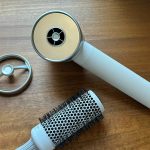The data – from Professor Joshua Ross and Dr Thomas Prowse at the University of Adelaide – initially showed that the state would most likely peak at more than 8000 infections during April.But since being readjusted, the modelling predicts the daily case numbers would reach about 5500. According to SA Health, the modelling had been consistently reviewed and recalibrated and is vital to help with the state’s health system response. “While it is difficult to predict human behaviour, this is a good indication that South Australians are continuing to do the right thing, such as staying home if unwell and keeping up with Covid-safe behaviours while out in the community,” it said.“It is still a little early to tell if we have reached the peak of the Omicron wave, but watching the case numbers over the next few days may help in this regard.”The modelling, released by SA Health on Tuesday, also found the predicted number of hospitalisation was also lower than first expected. SA Health said it was possibly because the BA.2 subvariant was less severe than Omicron.Chief public health officer Nicola Spurrier said the modelling best predicted about four weeks ahead. “We’re always wondering how are the vaccines workings, is there going to be waning of immunity and is there potential for another variant?” she told 5AA Radio on Wednesday. “I think this demonstrates when you have a very well-vaccinated community, what the difference is.If you compared this to our previous wave, we had a much higher rate of ward occupancy but even with high numbers (during this current wave) the hospital admissions are so much lower.”Professor Spurrier again advised everyone to get their booster shot and said about 70 per cent of eligible people had received it – one of the main reasons hospitalisations are not so high. “People say they’re not worried about getting Covid but don’t want to isolate. If you’re one of those people, what you can do to stop yourself being in iso is to get that third dose. “It not only reduces hospitalisations and the severity but also has an impact of you getting the virus in the first place.”Professor Spurrier also said she would continue to wear a mask in populated indoor spaces even after the mask mandate was removed on April 14 because she had seen many of her colleagues who had previously contracted the virus continue to be “quite unwell” for weeks after their infection.
Powered by WPeMatico






